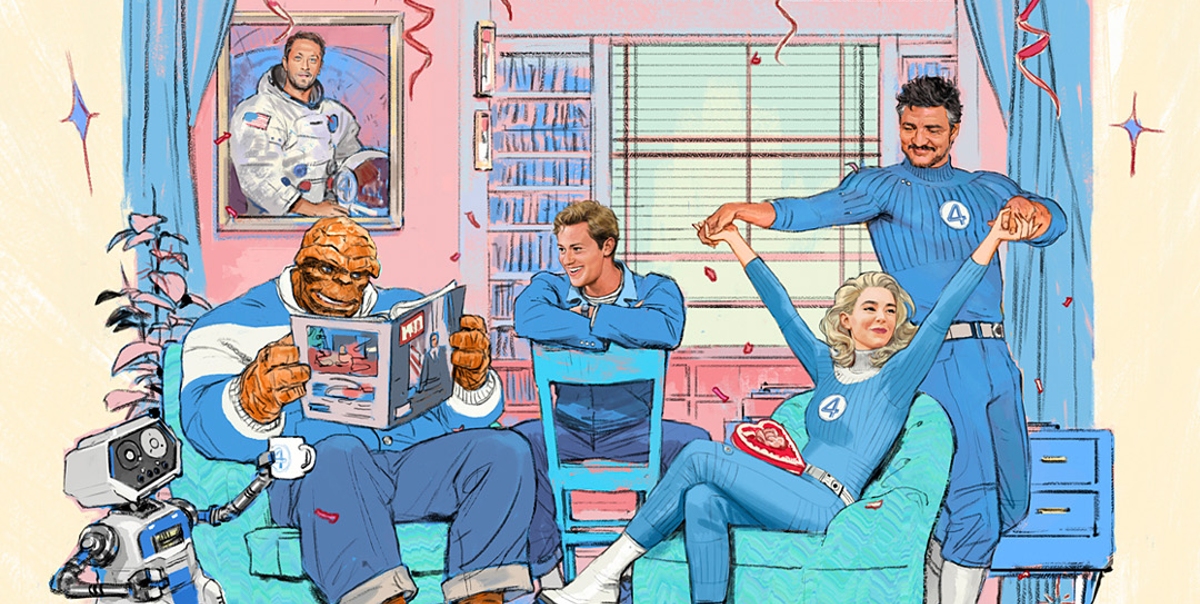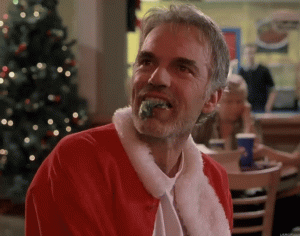
It’s official. Galactus is coming to the MCU.
After months of speculation, Marvel officially announced that they’ve found their Galactus. Ralph Ineson, a Game of Thrones veteran known for standout supporting roles in The Witch and The Green Knight, will portray the Devourer of Worlds. Ineson’s casting comes on the heels of other compelling announcements for its upcoming film The Fantastic Four, including Paul Walter Hauser and John Malkovich. Marvel hasn’t yet disclosed which characters those two are playing, but the smart money has Hauser down for the Mole Man. Malkovich could fit a number of characters, including minor baddies Puppet Master or Diablo, including just a grouchy official. Heck, maybe he’ll finally get to play a version of the Vulture, as he was slated to do in Sam Raimi’s abandoned Spider-Man 4!
While any of those baddies would be fun, the Galactus casting deserves the most attention. As readers likely remember (whether they want to or not), Galactus graced the screen in 2007’s Fantastic Four: Rise of the Silver Surfer. But of course he was visualized there as just a giant cloud—more of an impersonal entity than the character beloved by fans. In fact, that previous big screen Galactus only briefly took the big guy’s iconic shape, with a shadow in the cloud vaguely suggesting the beloved silhouette designed by Jack Kirby.
With the exception of Doctor Doom and the X-Men, Galactus has been the most highly anticipated character to come out of Disney’s purchase of 20th Century Fox, even more than the FF themselves. Still bitter about the Galactus cloud from Rise of the Silver Surfer, fans have wanted to see a comic’s accurate take. But the casting of Ineson suggests something even better, a richer and more tragic version of Galactus, as seen in some underrated Marvel Comics.
The Birth of Galactus
Galactus came from a high point in the first wave of 1960s Marvel Comics when Kirby and Stan Lee were at the peak of their powers. Fantastic Four perfectly combined Kirby’s high-concept storytelling with Lee’s melodramatic dialogue, embodying everything great about the Marvel Revolution. Stretching across Fantastic Four #48-50, The Galactus Saga introduced both Galactus and the Silver Surfer in a tale that felt more massive than any other comic book saga before it.
As wonderful as that story was, the Galactus in those issues wasn’t much of a character. He was simply an unknowable force. Which makes sense, as Kirby drew the story to be a battle between the Fantastic Four and God, something that Lee changed in the dialogue. However, in later tales, Galactus grew to be an actual person and, therefore, more pitiful.
Lee and Kirby revealed Galactus’ origin not in Fantastic Four, but in another favorite of theirs, Thor. In Thor #169 (1969), Galactus agrees to share his sad tale with the God of Thunder. Galactus was born Galan, an explorer from an advanced utopian planet called Taa. Despite all their achievements, Taa could not forestall the destruction of the universe. In a plot development that recalls not just the origin of the Silver Surfer, but that of Superman (a connection made explicit in the 1999 crossover Superman/Fantastic Four), a desperate Galan searches for a way to protect something of Taa.
Galan succeeds, after a fashion. Bathed in cosmic rays, Galan experiences the collapse of his universe and birth of the new universe. But when he awakens, he has changed, overcome with an insatiable hunger. Christened “Galactus” by the Watcher Uatu, Galan must now feed on planets to stay alive and preserve the glories of Taa.
The Sad and Lonely Death of Galan
As that story suggests, there’s a deep sadness in Galactus, a pathos within his awesome power. The best Galactus stories acknowledge that sorrow, including a moving single issue within a larger Silver Surfer series. Written by Donny Cates and illustrated by Tradd Moore, and with colors by Dave Stewart and letters by Clayton Clowes, the 2019 miniseries Silver Surfer Black mostly followed the Surfer’s battle against Knull, god of the Venom Symbiotes, deep within a black hole.
However, in Silver Surfer Black #4, the Surfer goes back in time to the source of his suffering. There he finds Galactus freshly emerged from his incubation chamber and just now realizing his new fate. The Surfer wants to kill Galactus, which would prevent him from losing his identity as Norrin Radd and let him stay on his planet Zenn-La with his beloved Shalla-Bal. But the Surfer pauses for a moment and allows Galactus to speak.
For most of the the series, Moore and Stewart combined to make psychedelic visuals, blending round, liquid line-work with vibrant colors, overwhelming the reader. But when the Surfer asks Galactus to remove his helmet and show his true face as Galan, Stewart mutes his colors and Moore chooses wide shots with symmetrical shapes. The change in art style gives the conversation between the Surfer and Galactus a sober tone, heightening its emotional stakes.
“What do I become?” Galan asks the Surfer, his plaintive face off-set by a light tan background. “Death,” answers the Surfer, looking fierce and righteous. The conversation lasts only a few pages, but it’s long enough for Galan to convince the Surfer that good does not spring from evil done against evil. These few pages reveal the depth of Galactus’s sorrow. In his desire to protect a planet he loved, he lost his identity as Galan. Worse, he must now inflict upon other planets the same fate done to his own, becoming what he hates.
The Multiversal Tragedy of Galactus
So necessary is this tragedy to the Galactus story that it reappears even in tales that don’t feature Galan as Galactus. In the 1999 alternate universe story Earth X by Jim Krueger, Alex Ross, and John Paul Leon, Reed Richards puts the universe in peril when he transforms Galactus into a star. Realizing that Galactus must be a universal constant, Reed’s all-powerful son Franklin takes the role, finally giving up his humanity.
During Jonathan Hickman’s wonderful Fantastic Four run from the 2010s, the team seeks help from Reed and Sue’s grown children Franklin and Valeria, who have been time-traveling with their father Nathanial. As in Earth X, Galactus is a universal constant, something that must be retained to defend reality from the Celestials. When the Celestials defeat Galactus, Franklin uses his powers to revive him and defeat the invaders. As a result, the adult Franklin takes the World Devourer role while Galactus becomes his herald.
Although out of main continuity, those last two instances may be important for The Fantastic Four. After all, we already suspect that the movie takes place during the 1960s in a universe alternate to the mainline MCU. And early plot rumors have suggested that Franklin plays a key role. Furthermore, we know that The Fantastic Four will feature Julia Garner’s Shalla-Bal as the Silver Surfer, not the traditional Norrin Radd. And Shalla-Bal’s most notable tenure as the Silver Surfer occurred in Earth X, as a herald for Franklin as Galactus.
Lastly, the current Multiverse Saga climaxes with the sixth Avengers movie, currently titled Avengers: Secret Wars. The most recent Secret Wars storyline, the one the MCU will most likely adapt, stems from Hickman’s Fantastic Four run, in which Galactus became Franklin’s Herald.
Sorrowful Galactus on the Silver Screen
Whether or not Ineson’s Galactus will be Galan the explorer or a future Franklin Richards, one thing is clear: his World Devourer cannot be a vast, unknowable force, but rather a person who continues to suffer for his mistake.
It’s hard to think of an actor better suited for that take than Ralph Ineson. Obviously, his rumbling baritone suggests power, as one would expect for Galactus. But Ineson excels at mingling pathos if not outright sorrow into his line deliveries. Take the warnings that his self-righteous Puritan William hurls against teen Thomasin (Anya Taylor-Joy) in The Witch, which almost quiver with the fear of God and fear for his child. Take the declarations his Green Knight makes to Sir Gaiwan (Dev Patel) when the latter returns to face the creature after a fruitless yearlong quest in The Green Knight.
In each of these cases, Ineson’s performance communicates great strength. But he also includes a level of sadness, as if already regretful for the actions he must take. Even if The Fantastic Four doesn’t outright adapt Silver Surfer Black #4, that story and others provide a model for Ineson’s Galactus performance, helping him imagine the character as at once terrifying and heartbreaking.
After all, that’s the real Galactus, the one fans have wanted to see for so long.
The Fantastic Four releases to theaters on July 25, 2025.
The post The Fantastic Four Movie Must Feature the Most Tragic Galactus Moment Ever appeared first on Den of Geek.






